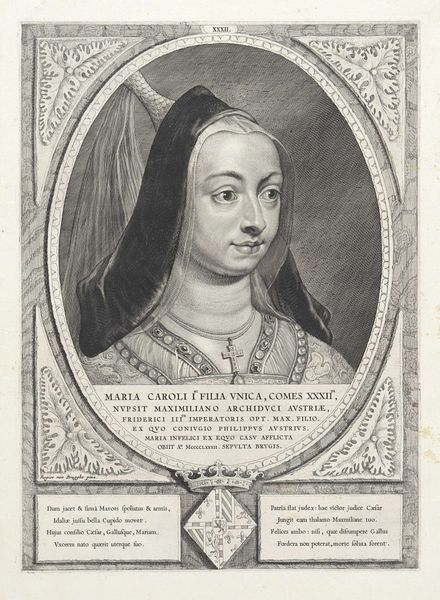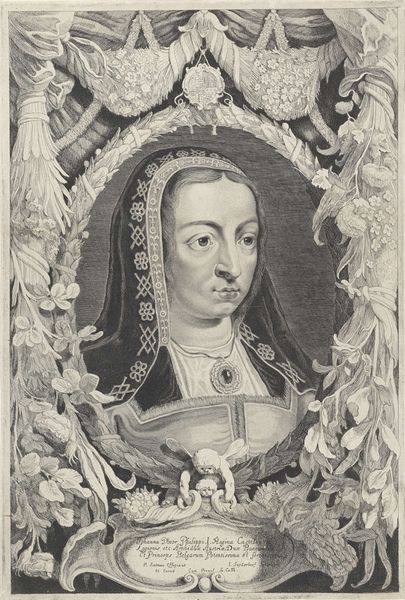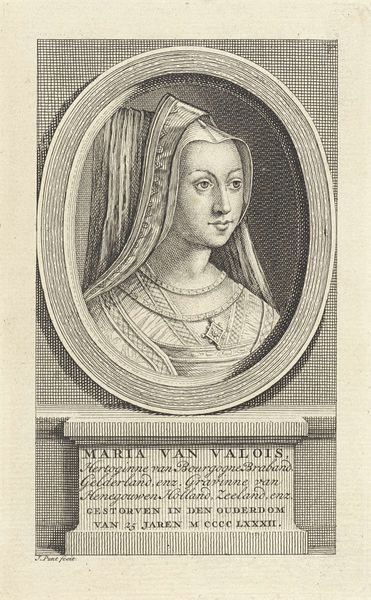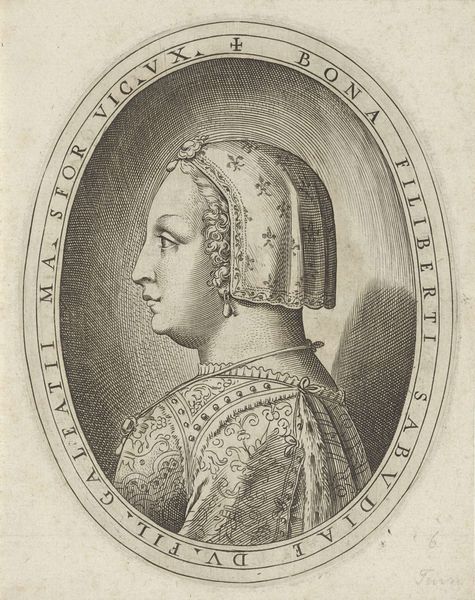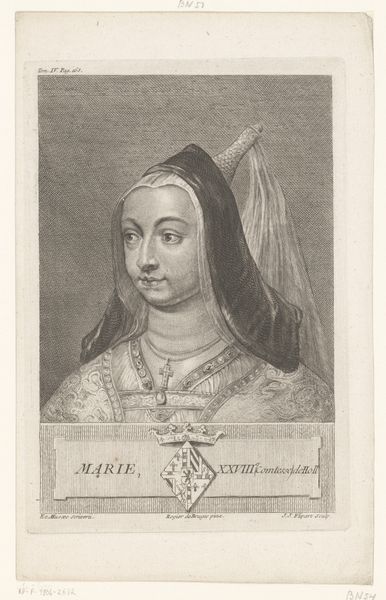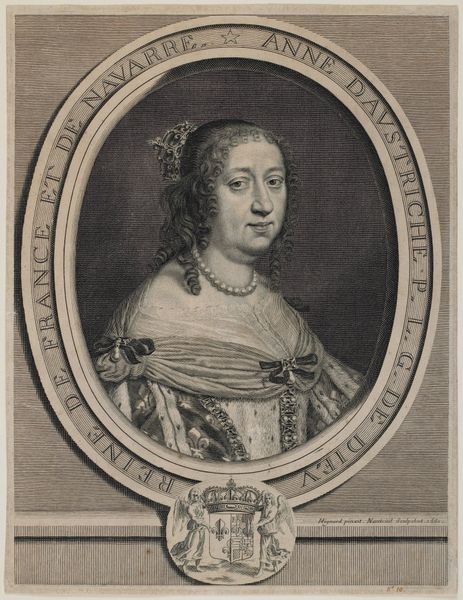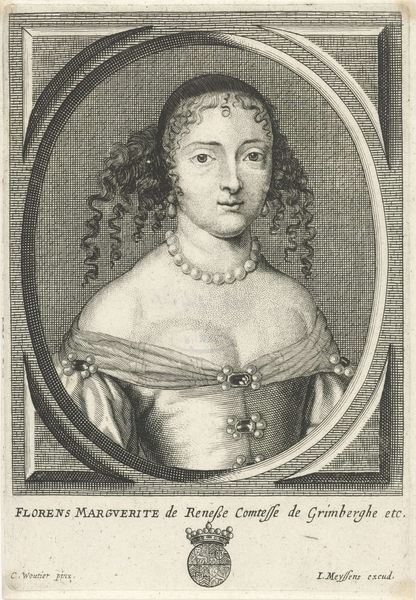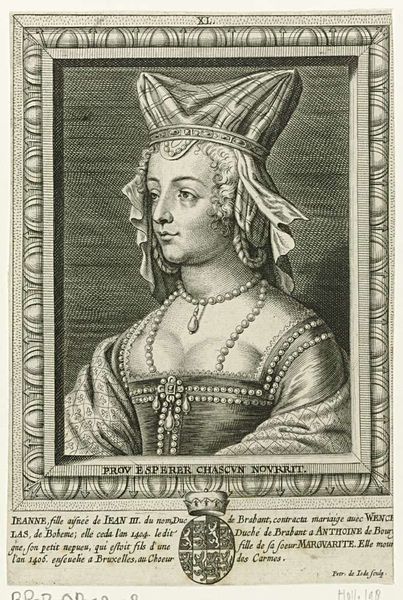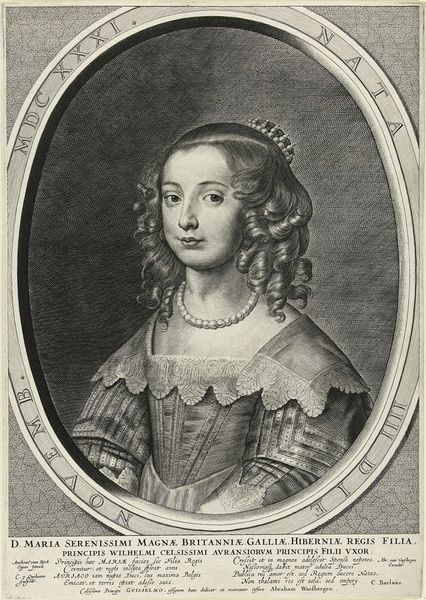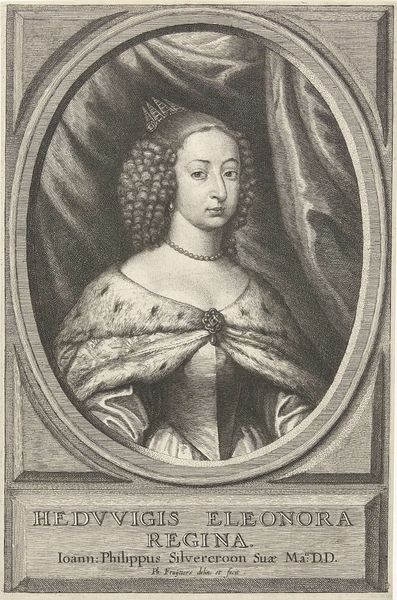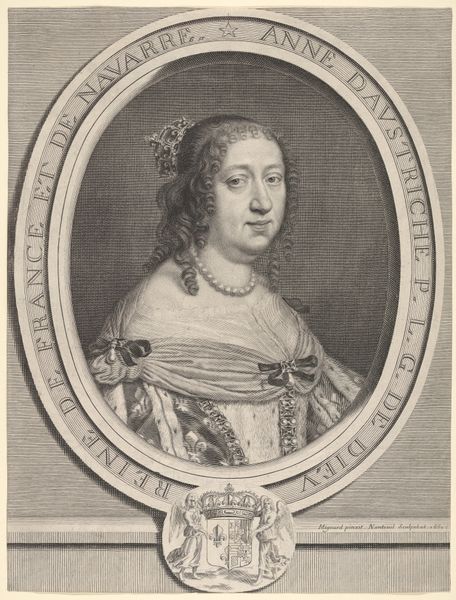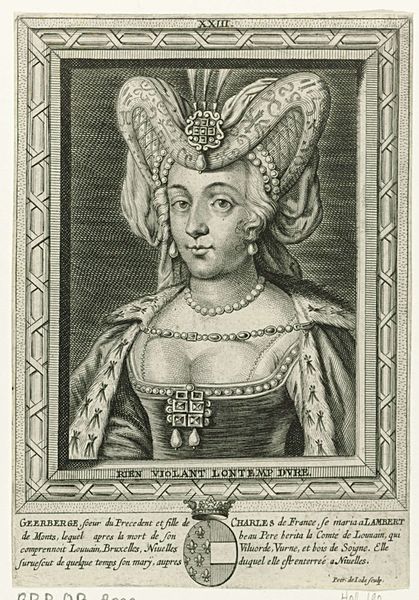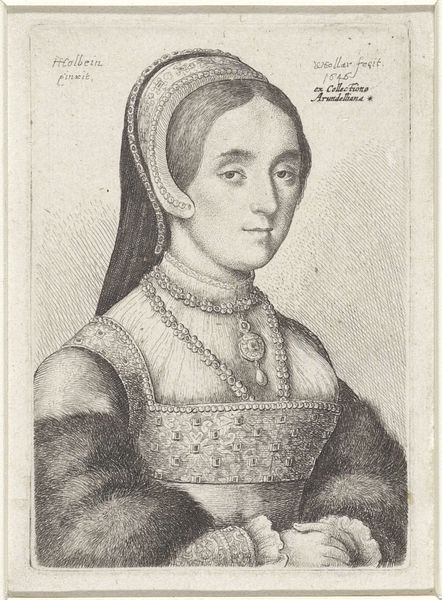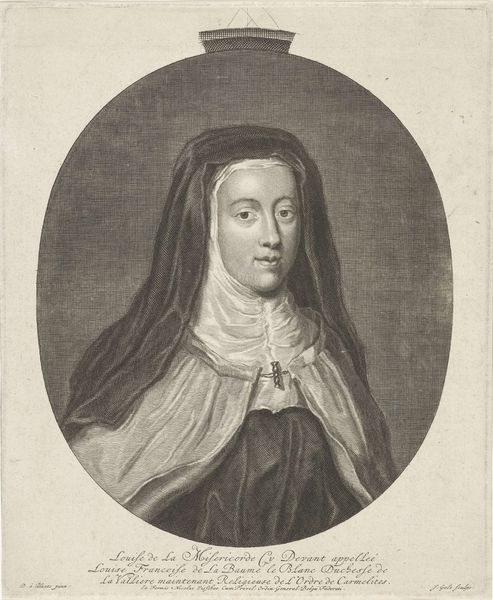
intaglio, engraving
#
portrait
#
medieval
#
baroque
#
intaglio
#
old engraving style
#
traditional media
#
engraving
Dimensions: height 173 mm, width 119 mm
Copyright: Rijks Museum: Open Domain
Editor: Here we have "Portret van Maria, hertogin van Bourgondië," or Portrait of Mary, Duchess of Burgundy, made after 1661 by Pieter de Jode II. It’s an engraving, giving it a very linear and precise feel. I’m curious about the context of making a portrait like this so long after her death in 1482. What strikes you about it? Curator: For me, this piece speaks volumes about the materials used and the labor involved in creating and disseminating images of power. As an engraving, this portrait could be reproduced relatively easily, making it accessible to a wider audience. This reproduction is very different from the traditional way portraiture functioned in the late Medieval and Early Modern period. How does the choice of engraving, as opposed to painting, affect how we understand her status? Editor: I hadn’t thought about it like that. A painting feels more unique and precious, directly connected to the patron. An engraving allows for mass distribution, making her image available to more people, almost democratizing it. But who was commissioning these prints, and why? Curator: Exactly! It prompts us to consider who controlled the means of production. The act of engraving—the physical labor involved, the skill required, and the tools employed—all contribute to the portrait's meaning. Are we looking at a memorial, or something more propagandistic? We can see the text, what does that tell us? Editor: It details her lineage. Seeing her connected to powerful families, even centuries after her death, reinforces her continued significance and legitimizes those claiming descent or association with her. This was for the elites. Curator: Precisely. And think about the consumption of these images. Where were they displayed, who was collecting them, and how did they contribute to constructing a specific narrative around Mary’s legacy? It makes one wonder about the market forces and the social impact surrounding this portrait's production. Editor: I never thought about an engraving as more than just a copy. Thinking about the labour, materials, and social implications definitely shifts my perspective! Curator: Mine too, actually. This image prompts considerations about artistic choices that might otherwise have been ignored.
Comments
No comments
Be the first to comment and join the conversation on the ultimate creative platform.
